|
|
Review GSM phone Voxtel 3iD
Voxtel
3iD. Live pictures
Package:
- Handset
- Battery
- Charger
- Stereo headset
- miniSD 128 MB memory card
- USB cable for connecting PC
- Manual
For the first time we told about mobile phone Voxtel 3iD in the material from SvyazExpocomm 2005, then the device had no name and the official announcement by the company was released much later. Voxtel 3iD is probably the most actively discussed model. And what does it stand out for? Everything is plain, that is the first 3MP camera phone that will be sold in Russia.


The handset is a double screen clamshell with a rotational upper part, which turns in 180 degrees. The phone size is average - 95x47x25, and the weight forms 125 grams. Your trousers' pocket will be quite suitable for carrying the device, at the same time a shirt pocket will fail. The phone design is really pleasant with the bottom part slightly thicker and longer than the upper one. Due to that the body looks smaller than it actually is. The model is shipped in the only colour variant which is black with silvery. The covering you see is black and lacquered, it's easily marked, though fingerprints do not strike. The whole body is of a good plastic, the assembly quality is high, and all the details fit each other closely.

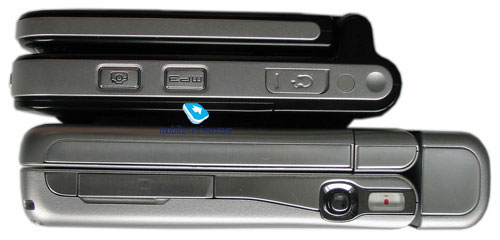
In your hand the phone will lie well, and for more comfort at opening a hollow rounds the body edge. The only point we'd like to mention is when opening with your left hand, the top part shifts a bit, since it has a hinge to rotate clockwise. Opening the phone with both hands or only your right one, you'll never experience such problems.


The upper cover may be fixed in three positions. They are closed, 90 degrees open (use for rotating the cover) and completely closed. As we have already told, the upper cover rotates in an angle of 180 degrees. The direction is only clockwise for opening and counterclockwise forgetting back. We noticed the action is easier to implement if you are used to holding the phone in your left hand. The rotational mechanism is reliable and will cause no problems. The cover is firmly fixed, and the only thing that may bother you is opening with your left hand.



A coupled volume button is placed on the left side and a miniSD connector closed with a plastic shutter is below. This disposition allows hot memory card change, and there is also a pushing mechanism which requires slight pressure. The max card capacity supported by the phone is 1 GB.

The right side surface holds a miniSD connector (both for connecting a headset and for attaching the synchronization cable) closed with a plastic shutter fixed to the body. A cable for connecting a PC and a wire stereo headset are shipped with the phone. Buttons for activating an MP3 player and a camera are on the same right side.
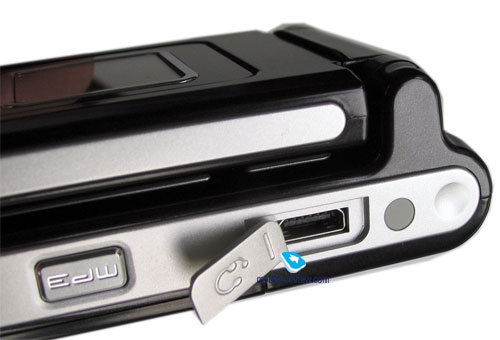
The top edge features a strap hole, and the bottom one shows an interface connector closed with a plastic cover fixed on the body as well.

A small 65K 96x96 pixels (19x19 mm) cSTN display is placed on the face part of the device. The display has a middling quality and almost completely fades in the sun. Both internal and external screens use the same backlighting lamp, which means when opening the phone the external display keeps on working.
The 3iD collected some disadvantages of the previous models. In particular, when speaking on the phone, you have all the information duplicated on the external screen, which means any standing nearby can see a caller's number and photo (if it was assigned).
The external display can hold user's number and name, his photo (almost full-screen 96x72 pixels). While the MP3 player works a play list is represented, and during actual playback a graphical equalizer, a title, total track duration and time elapsed.

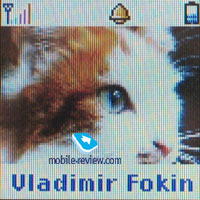

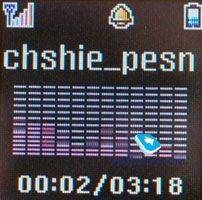
At the very same place on the front panel a service indicator is placed, which can be turned off completely by your wish.
Opening the device you will see an internal TFT display with the resolution of 176x220 pixels (32x39.5 mm) capable of up to 262K colours. The screen quality is quite good - it is enough bright and contrast. In the sun it remains readable.

Above the screen two loudspeakers closed with a decorative grating are placed. The phone size allowed having them quite distanced, we can't say stereo effect is achieved, but something resembling is present.

The plastic keypad is integrated, and a 4D navi button with small size though comfortable in work features an OK one. The developers managed to use the whole working surface, and thus the keys are large and comfortable.

The number keys are closely placed, but due to their big size they make no problem dialing a number or entering a message. The blue quite even backlighting though is worse on the right row. Both Latin and Cyrillic characters are inscribed on the buttons.
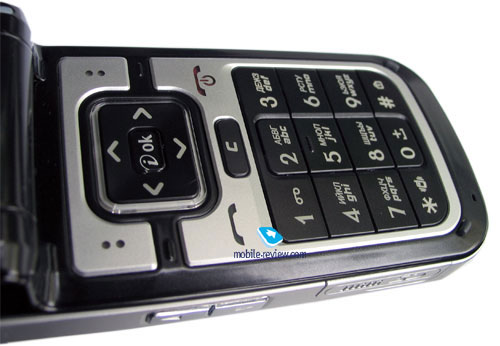
On the back cover, a camera objective is placed on the round eminence. Not covered with anything, it is slightly deepened into the body, and for better protection the ring surrounding it is made of metal. A LED flash is near the objective. It is not very powerful, but sometimes really helps when taking photos.

Besides, the flash can be used as a lamp, just press and hold the volume button. Then it is on for 30 seconds, and after that you'll have to repeat the procedure.
The rest of the back is taken with a battery compartment. Its external side features a rubber covering in order to the device lay better on the surface. The covering is firmly fixed with no backlash.
A 1000 mAh Li-Ion battery is integrated. This great power is necessary for an acceptable battery life, since the device consumes much energy while taking photos. According to the manufacturer, this is enough for working for 150 hours in the standby mode and up to 5 hours in the talk one. In Moscow the phone worked for about a day in case of 30 minutes of talks and about 2 hours of MP3 player use, up to 2 hours of other functions as well (including camera, Bluetooth and games).The result is not very good, but educing the load you can have the phone working for about 2 days. Full recharging takes about 2 hours.
Menu
In contrast to other company models the 3iD has undergone sufficient changes. The main menu now can be either shown as a 3x4 matrix or in a more customary for the company models appearance. That is an animated image of the menu, only one item is available at the same time, and here we have a cyclic menu. No slow down revealed in both cases. Vertical lists represent submenus. Also horizontal deviations of the navi button are responsible for surfing along the submenus. Fast number navigation is also provided.

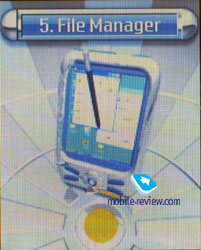

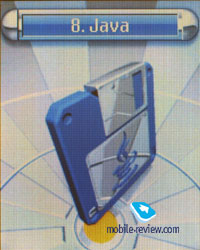

The localization is carried out rather well, abbreviations are almost absent, and the font is average in size and easy to read. Predictive eZi text input is provided for both Russian and English.
Available phone memory forms about 44 MB, and now add miniSD memory card capacity to this size.
Messages. The phone can keep up to 100 messages, the top right corner shows the number of characters sill left and the total number of messages entered while typing in a message. You can send a message to several addressees (up to 20). Also EMS is supported, and that's why you can find a set of short animations and sounds. Besides, the device offers a set of templates, which are editable, and you can add your own ones.
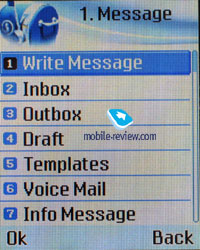
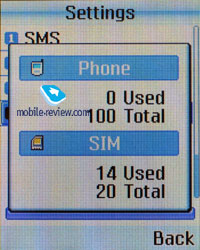

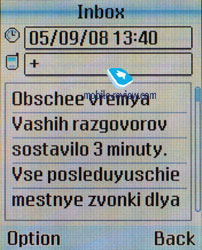
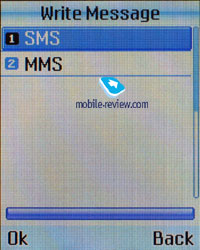

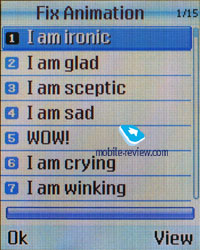
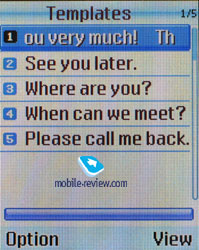
Only three melodies are preset of an incoming message, and you can't set own one.
The MMS editor is plain and clear, no problems with it. The outgoing message size can't exceed 100 KB, that's why you can't attach a picture or a video clip to a message.
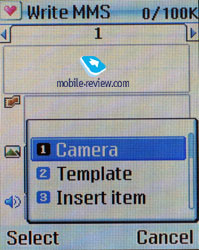

Phonebook. The device holds up to 1000 entries. Each entry can have name (up to 25 characters), up to four numbers, e-mail address. Moreover you may appropriate an image to an entry or one of the groups. You are allowed to take any picture, and if the size is not right, cut the necessary part of (96x72 pixels). The search is carried out by the first letters or a group. Totally there are 6 groups and each can have own melody and a name.

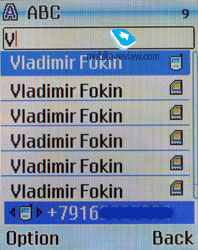

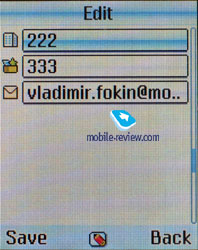
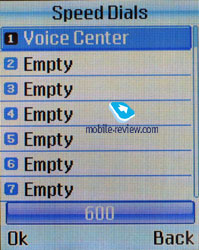
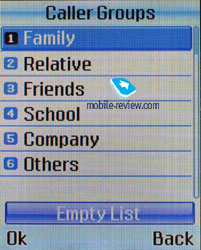
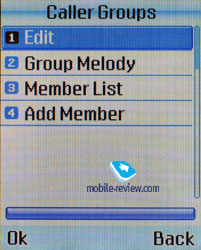
Fast dial for up to 7 numbers is available. The general list may show both numbers from the internal memory and SIM one together or separately.
At incoming call a caller's photo is shown in a small window (96x72 pixels).

Settings. Alarm-clock hides here. There are three separate alarm-clocks and each could be once, daily and week-day activation. And a common melody is set for all of them select from either internal memory or the external memory card. The type - any musical one, including MP3.


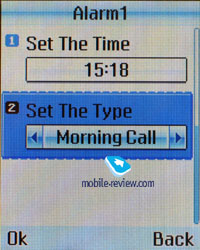
For the display, you can select of the two main menu views, set one of the preinstalled pictures or animations to the internal or external screen. Totally two variants of animation, two variants of clocks, a calendar or a static image are offered. The external screen allows choosing one of the two available clock types or a static picture. Also any photo or a video clip can be set as a wall paper for the internal screen.

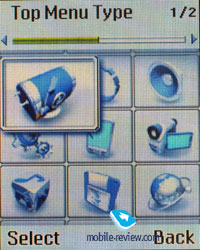
Here also you can adjust the contrast for the internal screen and set backlighting time - 10 or 30 seconds or a minute.
Files. A simple file manager. Here you can inquire used and free memory size, total memory size. The folder structure is strict, there are three of them Sound, Video and Image. If saving an object to a folder with another name, the device won't see it. There are 44 MB of memory onboard, and 4 MB or them are given to Java applications. At connecting to a PC with no extra drivers installed, the phone memory is defined as an external memory carrier. Both internal and external (memory card) memory types are viewable on a PC as separate disks. Phone memory can be formatted from this very section.
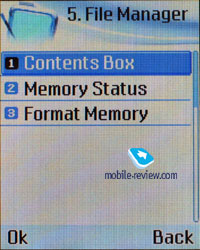
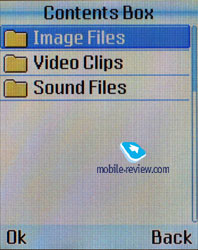
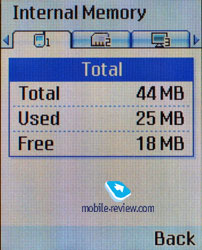
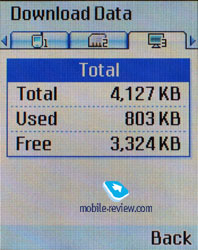
Connection to a PC is established using USB version 1.1, despite this fact, the data transmission speed is quite acceptable.
Applications. The device holds rather a good hardware MP3 player, and as we have said above, it is activated by the right side button. Even with the phone closed you can control the player, the activation button serves for start and pause during the playback. Volume buttons serve for changing track besides their main functions, just press and hold one of them. When the phone is open, you can control it by the navi button, and its functions are displayed on the screen. There is a search by pauses inside the composition itself. Still you can create own playlist. The phone features 5 line equalizer, and four initial setting - normal, rock, pop, and classic. Unfortunately, the player can't work in a background mode. So you'll have to turn it off if you want to read an SMS. Also we noticed a slight drawback. When leaving the player, the equalizer turns into a normal mode. Generally, the capabilities of the player will please an unpretentious user, the main disadvantages are impossibility to work in background and strict folder structure, due to which all the compositions are kept mixed in a single folder.
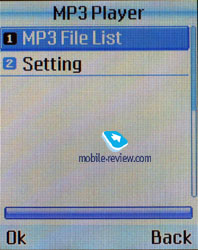
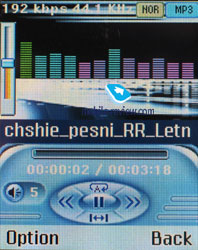
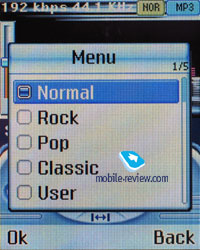

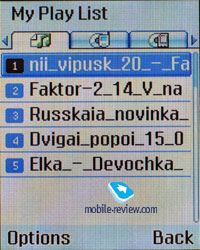
Games. Totally, there are two games preinstalled. They are 3D games called Stuntcar and an arcade shooter Firehommer. You can turn the kick on (vibra). The games preset are very qualitative and visually show a powerful processor is integrated into the phone.
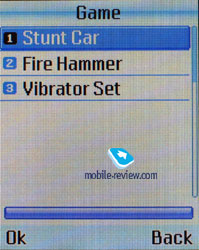
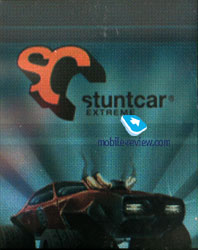
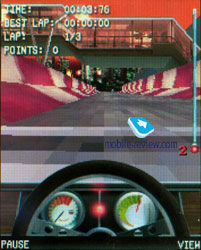
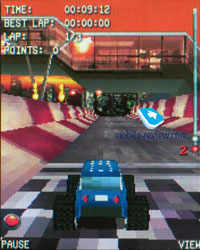
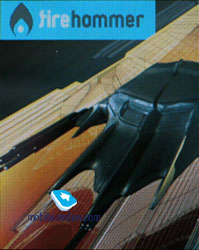
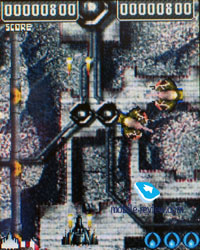
Calendar. You can have a monthly, weekly (divided into hours) view or all events for a day in a list. Each entry allows selecting one of the five categories (meeting, date, trip, holiday, anniversary, call and miscellaneous), setting a theme (up to 20 characters), for a type called "Call", you can have a date, time and a number entered. For "Meeting" - a theme, place (up to 20 characters), starts and end date and time, recurrence (daily, weekly, every two weeks, monthly and annually). And moreover, you can end the recurrence on a special date. Besides, a description (up to 40 characters) can be created, an alarm clock set (on time, or 15, 30 and 60 minutes before, two hours or a day before). Data format and the day to start a week can be selected here also. View how many of the possible 50 events are already reserved.

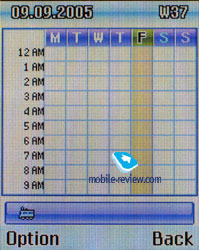
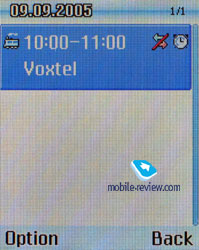
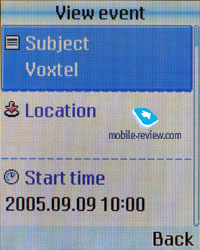
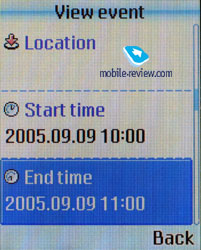

Tasks. Assign a theme (20 characters), a date to do the task before, select a status and set the priority.
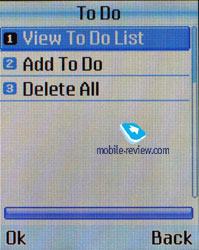
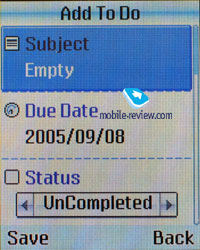
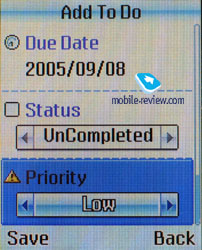
Dictaphone. Can work only in background. Record time is restricted by the free memory of the phone.

Besides, you can use a calculator, a unit converter, a stopwatch and a World Time function.



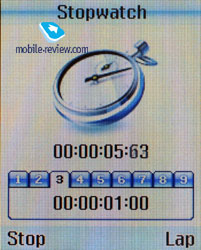
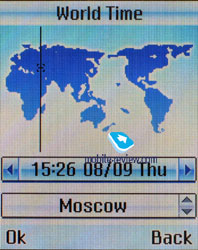
Bluetooth version 1.1 is preinstalled. The following profiles are supported: Headset, Handsfree, Serial Port, Dial Up Networking, File Transfer, Object Push. We explored no problems with Bluetooth, headsets (we tested Jabra and Sony Ericsson) work perfectly with the phone. No problems appeared when connecting to a PC and other phones (Sony Ericsson T68i, Nokia 9500, Motorola V600).
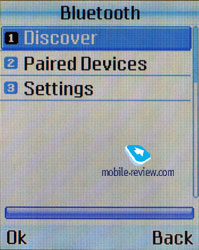

Profiles. Profiles. Totally, 7 profiles are provided, and each can be adjusted by your wish. A call signal can be selected from either phone memory or SIM one; it can be any melody including MP3. Vibracall can work together with a melody.
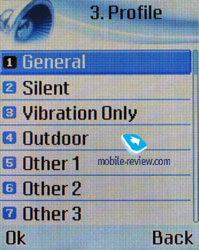

Call list. Here are lists of incoming, outgoing and missed calls. Up to 39 numbers can be kept in each list, and similar numbers are not summed up, just follow each other separately. The menu is organized with bookmarks, switching between the lists is possible with horizontal navi button deviations. A general list with all the numbers shown is at your disposal. Call counters are here in this menu. Time of the last incoming and outgoing call can be viewed here. You can find total duration of incoming and outgoing calls, but general call duration is to count by you.

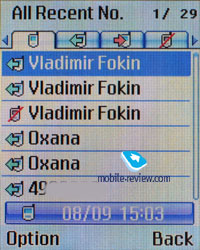
Java. Here Java applications are kept, two games are preset - Ball and AirStrike. As we have told above, 4MB are kept for applications. They are installed using WAP.
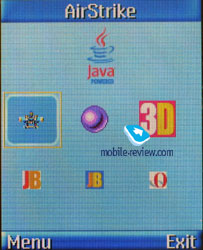

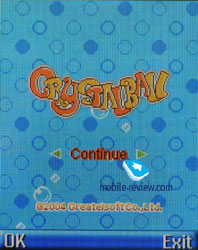

Iternet. WAP browser version 2.0 is installed.
Camera. Camera. A 3MP CMOS camera with autofocus is integrated. Only the internal screen can serve as a viewfinder. When the phone is open, you can control the camera with a navi button and two functional keys. When the top phone part is turned with the screen outside, the control is carried out by the side buttons. At first sight, that is uncomfortable, since two buttons are on the top (MP3 and camera), and a volume one is on the bottom. But really, that turns quite comfortably, the volume buttons are responsible for entering the menu and switching between the shooting modes, and the top buttons provide zoom and shooting. You can use two shooting modes - portrait (open device) and album (the top part is rotated in 180 degrees).
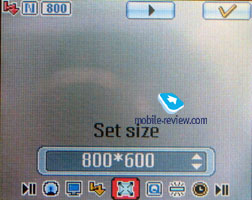
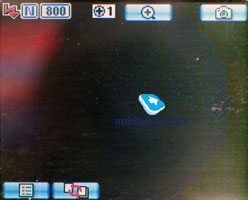
A pop-up camera menu is semitransparent, easy to orientate, and the following points are available:
- Resolution (128x96, 176x144, 352x288, 640x480, 800x600, 1024x768, 1280x1024, 1600x1200, 2048x153)
- Quality (normal, good, high)
- White balance
- Timer (2-10 seconds)
- Effects (rock, wave, brick, ellipse, sketch, mosaic, relief, sepia, negative, white and black)
- Zoom 4x
- Exposure (-3 +3)
- ISO (auto, 100, 200)
- Contrast (from1 to 5)
- Saturation up to 9
- Sharpness up to 4
- Measuring exposure (in the center, in a point, at a frame)
- Frequency (50 and 60 Hz)
- Flash - on/off (no automatic mode)
When leaving the camera setting application or rotating the top part from the album to the portrait mode and vice versa, you lose all the settings. The default resolution is 800x600 pixels and the quality is normal. Having got used to deal with the camera in a coupe of days, I now could turn the resolution and quality in a couple of seconds. The problems with the flash appeared, since it is on by default, and the item is placed in the end of the list. Though, this discomfort appears when shooting in album mode (navigation is possible only in a single direction), no such problem will bother you when shooting in a portrait mode (navigation in any direction).
In the camera settings, you can set a file name, a path where the file will be stored (internal or memory card), turn on and off the shutter sound; set automatic saving on or off. Besides, you can use a password to protect your photos, and then nobody except for you will see the photos.
Autofocus is well realized, though not very fast, but always acting well.
Just for you to compare we provide photos taken with Nokia N90. As we see, the N90's photos are sharper, but distort the colours. If editing the 3iD photos in a graphical editor, you can have a close sharpness and not as strong color distortion.
We have printed several photos by Voxtel 3iD and Nokia N90, and can claim they are of acceptable quality. But saying one of the cameras is better than another one is impossible, since each has its advantages and disadvantages.
Voxtel 3iD |
Nokia N90 |
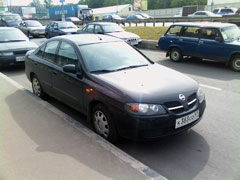 |
 |
(+)
increase, 1600x1200, JPEG |
(+)
increase, 1600x1200, JPEG |
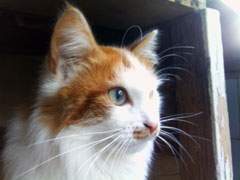 |
 |
(+)
increase, 2048x1536, JPEG |
(+)
increase, 1600x1200, JPEG |
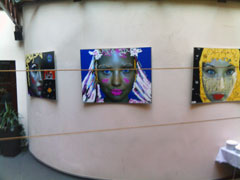 |
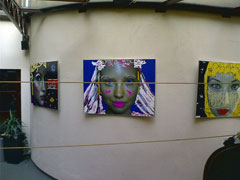 |
(+)
increase, 2048x1536, JPEG |
(+)
increase, 1600x1200, JPEG |
 |
 |
(+)
increase, 2048x1536, JPEG |
(+)
increase, 1600x1200, JPEG |
 |
 |
(+)
increase, 2048x1536, JPEG |
(+)
increase, 1600x1200, JPEG |
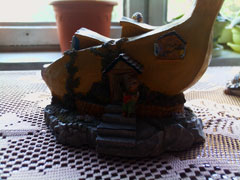 |
 |
(+)
increase, 2048x1536, JPEG |
(+)
increase, 1600x1200, JPEG |
 |
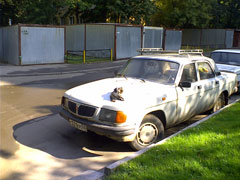 |
(+)
increase, 2048x1536, JPEG |
(+)
increase, 1600x1200, JPEG |
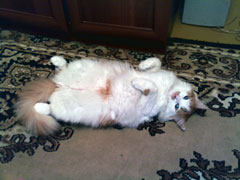 |
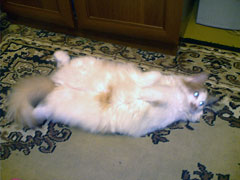 |
(+)
increase, 2048x1536, JPEG |
(+)
increase, 1600x1200, JPEG |
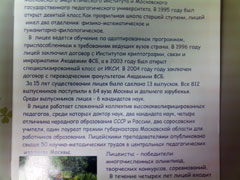 |
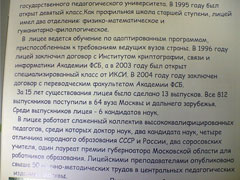 |
(+)
increase, 2048x1536, JPEG |
(+)
increase, 1600x1200, JPEG |
Voxtel 3iD
|
 |
 |
(+)
increase, 2048x1536, JPEG |
(+)
increase, 2048x1536, JPEG |
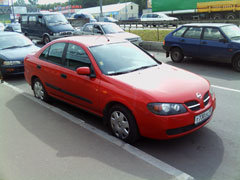 |
 |
(+)
increase, 2048x1536, JPEG |
(+)
increase, 2048x1536, JPEG |
 |
 |
(+)
increase, 2048x1536, JPEG |
(+)
increase, 2048x1536, JPEG |
 |
 |
(+)
increase, 2048x1536, JPEG |
(+)
increase, 2048x1536, JPEG |
 |
 |
(+)
increase, 2048x1536, JPEG |
(+)
increase, 2048x1536, JPEG |
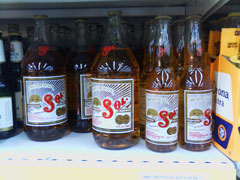 |
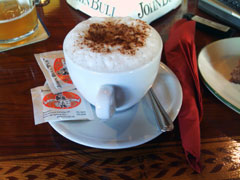 |
(+)
increase, 2048x1536, JPEG |
(+)
increase, 2048x1536, JPEG |
At shooting in the dark, we can see a grid on the photos, that is probably a shortcoming of our sample, and in commercial ones it will be improved.
Video is recorded as MPEG4 with the following resolutions: 128x96 176x144 352x288. Also three grades of quality are at your disposal: normal, good, perfect. We still failed to achieve good quality of video clips; they are all played back jerkily. We hope this drawback will be improved by the commercial version.
Sample
video 1 (МР4, 353 KB)
Sample
video 2 (МР4, 318 KB)
Sample
video 3 (МР4, 259 KB)
When viewing an album, you can have photos displayed both as thumbnails or full-screen. Video clips are also shown as thumbnails (the first frames). Preinstalled media player in the phone can play MPEG4 and 3GP video. If rotating the screen during the playback, video will be played full-screen automatically.
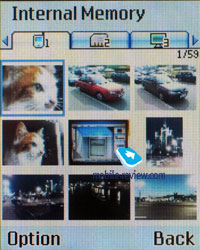
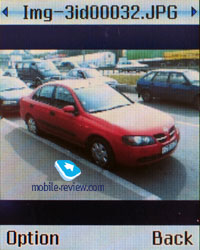
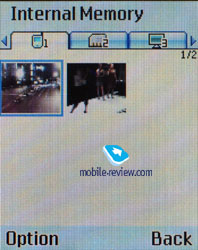
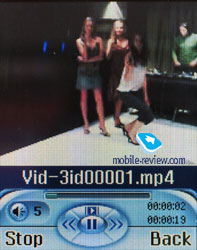
Performance. We used JBenchmark to test productivity.
|
3iD |
K750i |
| JBenchmark 1 |
3903 |
3845 |
Details |
| Text |
951 |
1000 |
| 2D Shapes |
966 |
951 |
| 3D Shapes |
656 |
650 |
| Fill Rate |
558 |
377 |
| Animation |
772 |
867 |
In the first version of the test package the device showed the results comparable to Sony Ericsson K750i.
|
3iD |
K750i |
| Jbenchmark 2 |
433 |
321 |
Details |
| Image manipulation |
242 |
194 |
| Text |
493 |
611 |
| Sprites |
419 |
295 |
| 3d Transform |
469 |
336 |
| User Interface |
644 |
289 |
And probably, the highest result on the market was shown by the 3iD in the second test. The model gives way to only several Linux solutions and several smartphones.
Impressions
The connection quality rouses no complaints, since even in poor coverage zones, the signal is kept. In any condition, you'll find the loudspeaker volume and microphone sensitivity enough. The 64-tones polyphony sounds well and loudly due to the two loudspeakers. MP3 composition from either phone memory or card one can be set a call melody. The power of the Vibracall is average and could be quite more in a device with such dimensions.


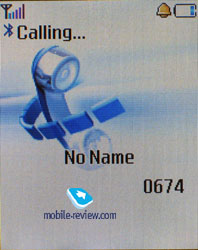
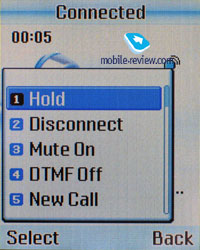
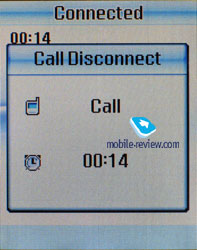
The presence of Bluetooth, miniSD memory card slot, a capability to connect to a PC with no extra drivers, high productivity can be referred to pluses. The minuses are no multitasking, camera settings loss, strict folder structure. In functionality the model loses to Sony Ericsson K750i, it is more probably comparable to LG M4410 and Pantech PG-6100.
The camera is neither ideal nor bad. The 3MP module in the 3iD is an ad measure to attract more users to the company products. Really, there are no advantages over 2MP cameras. And the photo quality will quite please an unpretentious user. Good autofocus and many settings are surely the advantages of the camera.
The handset will be launched in the end of September 2005 for expectedly $500. The company doesn't plan to make the product mass like Sony Ericsson K750i, that's why we should expect serious fall of the price.
Vladimir Fokin ([email protected])
Translated by Maria Mitina ([email protected])
Published — 17 September 2005
Have something to add?! Write us... [email protected]
|
News:
[ 31-07 16:21 ]Sir Jony Ive: Apple Isn't In It For The Money
[ 31-07 13:34 ]Video: Nokia Designer Interviews
[ 31-07 13:10 ]RIM To Layoff 3,000 More Employees
[ 30-07 20:59 ]Video: iPhone 5 Housing Shown Off
[ 30-07 19:12 ]Android Fortunes Decline In U.S.
[ 25-07 16:18 ]Why Apple Is Suing Samsung?
[ 25-07 15:53 ]A Few Choice Quotes About Apple ... By Samsung
[ 23-07 20:25 ]Russian iOS Hacker Calls It A Day
[ 23-07 17:40 ]Video: It's Still Not Out, But Galaxy Note 10.1 Gets An Ad
[ 19-07 19:10 ]Another Loss For Nokia: $1 Billion Down In Q2
[ 19-07 17:22 ]British Judge Orders Apple To Run Ads Saying Samsung Did Not Copy Them
[ 19-07 16:57 ]iPhone 5 To Feature Nano-SIM Cards
[ 18-07 14:20 ]What The iPad Could Have Looked Like ...
[ 18-07 13:25 ]App Store Hack Is Still Going Strong Despite Apple's Best Efforts
[ 13-07 12:34 ]Infographic: The (Hypothetical) Sale Of RIM
[ 13-07 11:10 ]Video: iPhone Hacker Makes In-App Purchases Free
[ 12-07 19:50 ]iPhone 5 Images Leak Again
[ 12-07 17:51 ]Android Takes 50%+ Of U.S. And Europe
[ 11-07 16:02 ]Apple Involved In 60% Of Patent Suits
[ 11-07 13:14 ]Video: Kindle Fire Gets A Jelly Bean
Subscribe
|



































































































































